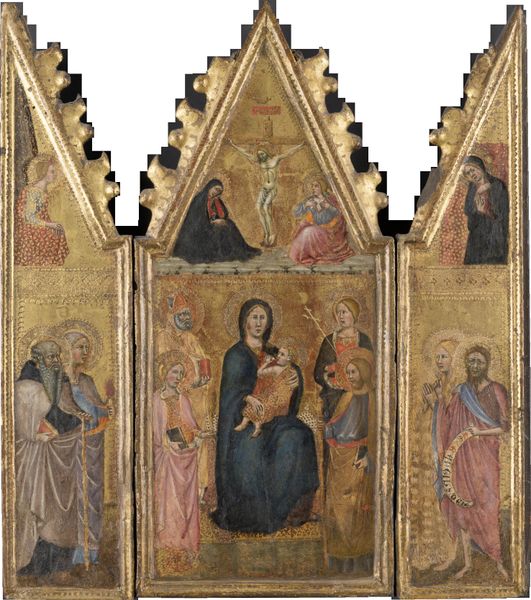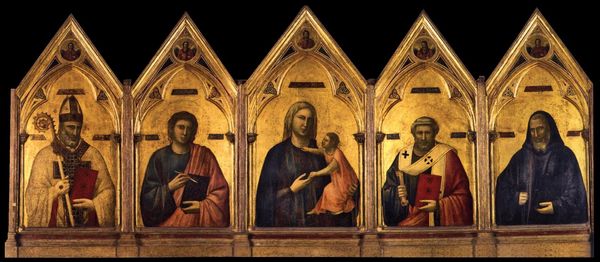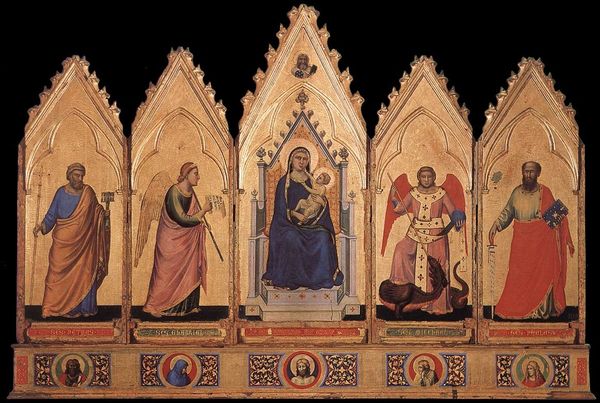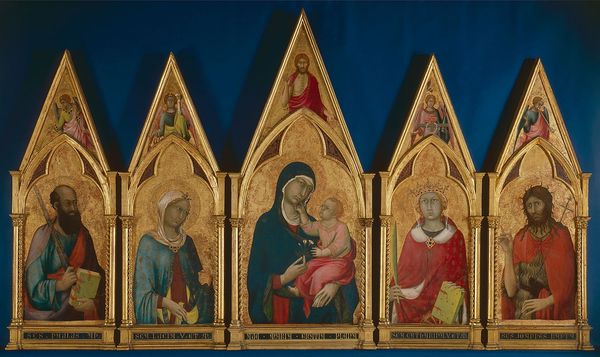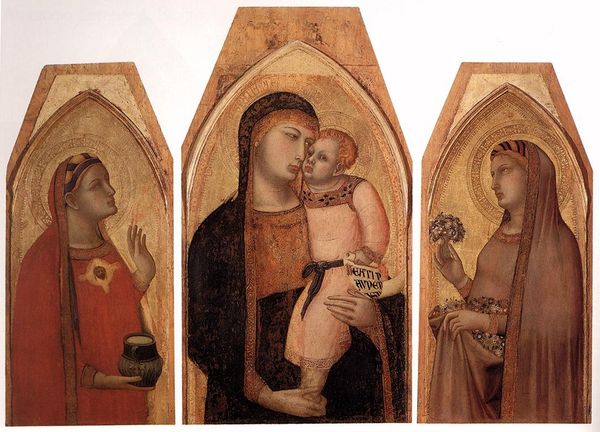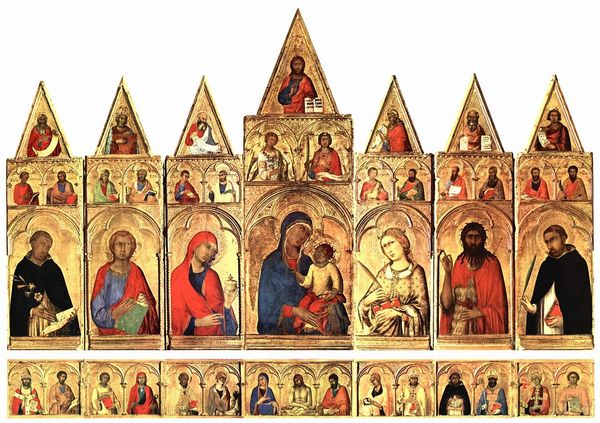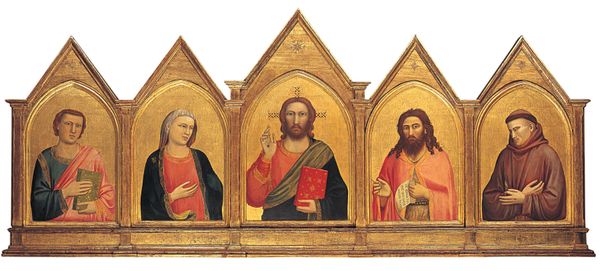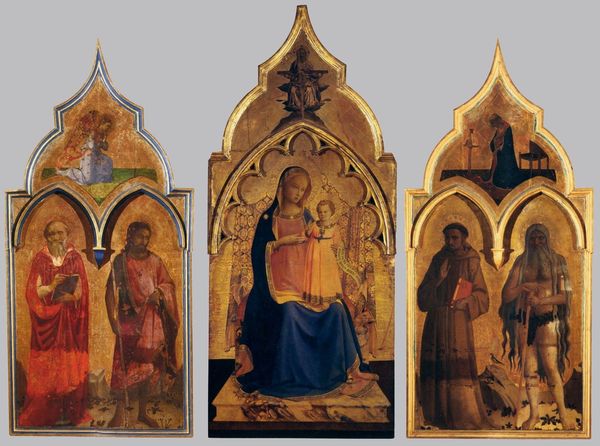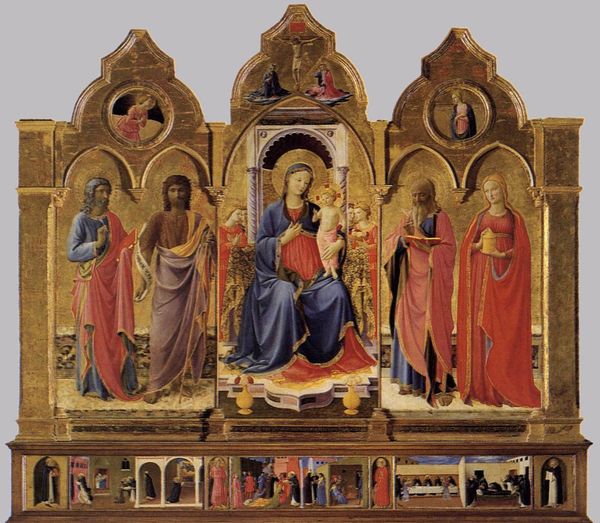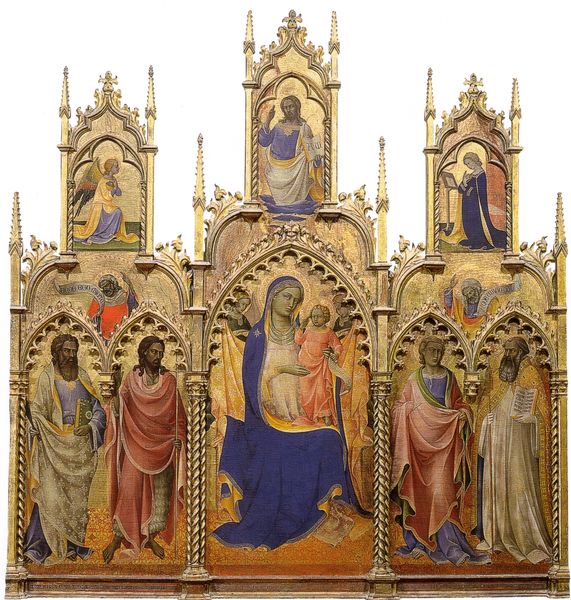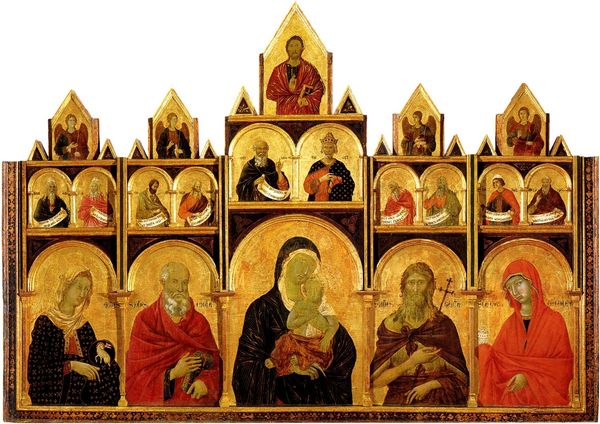
painting, oil-paint
#
portrait
#
medieval
#
painting
#
oil-paint
#
sculpture
#
sienese-school
#
holy-places
#
sculptural image
#
figuration
#
oil painting
#
history-painting
#
italian-renaissance
Copyright: Public domain
Editor: This is Ambrogio Lorenzetti’s "Altarpiece of St Proculus" from 1332. It's oil on panel and it strikes me how… deliberate the poses seem, like a staged tableau. What stands out to you about this piece? Curator: I'm immediately drawn to the material aspect: oil paint allowing for these luminous gold backgrounds and the detailing in the robes. Consider where these pigments originated, the labor to extract and refine them. Also, how does the artist challenge us by depicting this subject and how it might have affected its contemporary audience in relation to its high artistry or just mere 'craft'? Editor: That’s fascinating. So, the *stuff* that makes it almost dictates what it is, and what it communicates. How did this materiality play a role back then, compared to what we consider artistic or religious 'craft' today? Curator: Precisely! Think about the guilds, the workshops where these altarpieces were painstakingly produced. These weren’t solitary artistic endeavors. What implications arise from the means of production? This work speaks to a whole economy of religious display, from mining of raw materials to the skilled labor of painting. Does that change your initial reading of it? Editor: It does. Knowing it was a product of a system, a workshop, makes me rethink the 'deliberate poses' as almost standardized gestures, part of the artistic vocabulary of the time that the artist used to maximize its purpose and deliver a clear and impactful spiritual experience. It becomes about functionality and effective communication within a market, right? Curator: Exactly. It reveals the social fabric within which the artwork exists, its relationship to patronage, consumption, and even perhaps religious authority. A single piece offering layers of historical data! Editor: So it’s not just a beautiful image; it's a historical artifact loaded with social and economic information! I’ll definitely look at art differently now, thinking about the hands and materials behind it. Curator: A necessary and transformative viewpoint. The artist, the art object, and you, linked through material processes that transcend time and cultures.
Comments
No comments
Be the first to comment and join the conversation on the ultimate creative platform.
